The Chicken Run is the next most expensive thing you will buy, next to chicken houses and is most likely to be the weakest link as far as predators like foxes are concerned.
In order to come up with a sensible sized run, you will need to ask yourself the following:
- How many chickens will I have? Always assume a couple more because it is a very addictive hobby and you will soon be tempted to add a couple more hens to your flock!
- What space do they need? There are guidlines but legally a battery hen has enough space…. so perhaps you should consider what a fair size run would be for them to move around in, scratch, dust bath, feed and drink and whether there is enough room for them to get away from another hen if pecked.
The run is there to contain your chickens but also to protect them from predators. We have a number of different chicken runs and I have used several designs over the years but every time I visit a friend who has lost chickens to the fox, they say the same things, either “I didn’t want to spend….” or “I didn’t have the time to…” and “the fox got in through here…”
So lets look at the options, you can pay for a chicken run that will cost you money or you can build a chicken run that will cost you in time but is less money!
Buying a Chicken Run
Most of the chicken runs that you can buy to fit onto a coop (or that are built into a coop) are rather small in my opinion. There is an answer to this though. Use this run for your girls when the weather is really bad or when there is a higher risk of predators but at other times, open the door and let them out!
The down side to this is that they will spoil a small garden over time with their scratching and dust baths, will eat some of your plants and will leave droppings on paths for you to step in! The good news is they get to free range and will be far happier and healthier hens, you can enjoy having them out and can limit their time out a little to allow the garden to recover. You can of course fence chickens into a certain area of the garden which can help if you have plants that you don’t want destroying.
An alternative to letting them out of their run is to use a portable run so you can move them around onto fresh grass at regular intervals. I have done this regularly with my young growers but be warned they soon spoil the ground and need moving every few days if the grass is going to have a chance to recover so make sure you get a house and run that’s easy to move on your own or with someone.
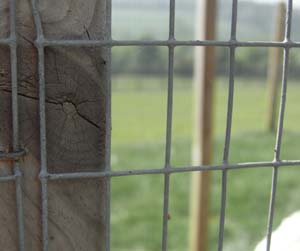 When buying a run, you will need to look at the quality of the wire – small rectangular or square mesh wire is better because foxes can’t get their teeth in to tear at it.
When buying a run, you will need to look at the quality of the wire – small rectangular or square mesh wire is better because foxes can’t get their teeth in to tear at it.
Cheap rabbit wire can be quite thin (especially the cheaper, imported versions from Asia) and I have seen this torn open in weak spots, sadly enough for Mr. Fox to get through. If you decide to use rabbit wire then look for British made, galvanised wire. You certainly ‘get what you pay for’ here but it’s worth doing the job properly.
Latches or bolts to doors are important as well. Galvanised fittings will last years so it is worth paying for these. Screws need to be stainless steel so they don’t rust.
Foxes will dig under a chicken run. If you have problems with foxes during the daytime (or your chickens are not securely locked up in their house at night) then you will need to consider putting your run onto bricks so that Mr. Fox can’t dig underneath. You can put wood chips down inside the run so they can be changed regularly.
There are some smaller runs available that might be customisable to your coop.
Building a Chicken Run
If you are going to build a chicken run, you will need to spend less money but more time. You can of course build a small portable run, much like you would buy and the same things apply to this as I’ve mentioned above but often, people that are building a run go for a fixed run in the corner of the garden.
Rabbit wire is the most economical choice but do be careful with the quality of it. If it isn’t particularly thick, a determined fox will be able to tear at it to get in. a double layer around the lower half of the fence is best if the wire quality is poor.
Ensure that weak points such as where wire joins houses is securely stapled. These areas will need checking regularly for signs of wear and tear. If installed correctly, electric fences are very good at keeping foxes out but on occasions, I’ve seen a run with a fox unable to get out! Sadly the damage has already been done.
Electric fences are not always suitable for every back garden but even in an urban environment where there are people, you can use an electric wire around the top of a fence to stop foxes climbing over.
Chicken wire needs to be burried at least 6 inches with another couple of inches turned outwards but if the soil is loose, you may need to go down 9 inches or more.
A fox can run up a fence (don’t think of a fox being like a dog, they can move more like a cat and can jump and climb really-well) so unless your run has a wire roof, you will need to make the fence at least 6ft high and ideally sloping outwards at the top.
Gates should ideally be made from a solid mesh stapled to a sturdy frame. If this is not possible, at least make sure the gate cannot twist, allowing a predator to get through if pushed in the corners. A fox will easily get through a small hole. If you don’t believe me, go to my page on foxes and watch the film of the fox squeezing under the fence that’s just a few inches off the ground!
Another method of building a large chicken run is to build some ‘chicken run panels’. You can cut all of your wood in one go, with many pieces being the same size. Once you have produced enough panels, you can screw them together making a large run that’s easy to assemble. Keep the panels off the ground so they don’t rot, a brick base on a small strip foundation is perfect but I’ve seen people use rectangular posts on their side and (better) old railway sleepers buried in the ground.
How to Build a Chicken Run
Building a chicken run is really straight forward if you have some basic DIY skills and follow some of the guidance I have given above.
There are a number of chicken run designs that manufacturers use and a few other ‘home made’ runs that are successful. It is difficult to say when a chicken run becomes a ‘fenced off area’ (see my page on fencing chickens if you have a large area to fence off as a run). I tend to call both ‘the chicken run’.
Here, I am going to call the ‘chicken run’ an enclosure that could be 3 to 4 meters long, usually attached to the coop, rather than being ‘around’ the coop and is often covered over.
Start by drawing up the run how you see it in your mind. I like to make notes on my drawing as things pop into my head. This can save you significant time later on if you have thought it through before buying and cutting wood.
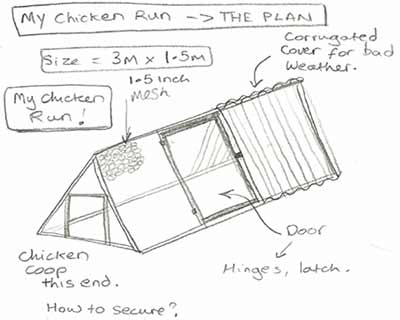 Draw a ‘close up’ of how you are going to make the joints of the chicken run, doors, joint wire and so on.
Draw a ‘close up’ of how you are going to make the joints of the chicken run, doors, joint wire and so on.
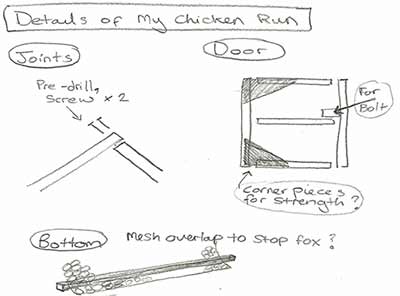 Build a ‘cutting list’ of pieces you will need to build the chicken run. Turn this into a ‘shopping list’ by working out how long your wood needs to be and what sort of thickness you will need. Add hinges, latches, screws, nails, poultry netting and staples to this.
Build a ‘cutting list’ of pieces you will need to build the chicken run. Turn this into a ‘shopping list’ by working out how long your wood needs to be and what sort of thickness you will need. Add hinges, latches, screws, nails, poultry netting and staples to this.
Go and buy your materials, allowing a small amount extra for mistakes!
Chicken Run Plans
One of the best sources of information on chicken runs has been looking through old poultry text books from the 1900’s onwards. These often give chicken house and run plans that have stood the test of time. Many have fold out pages with the plans on so providing you are happy to work in inches and feet, for a couple of searches on eBay and a few pounds, you can soon have quite a few chicken run plans.

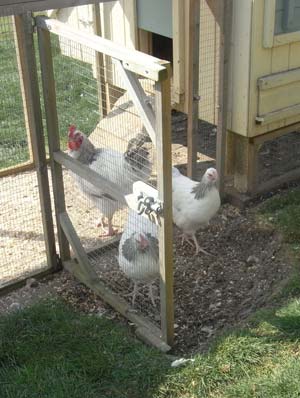
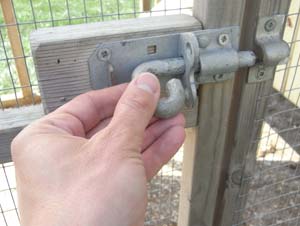



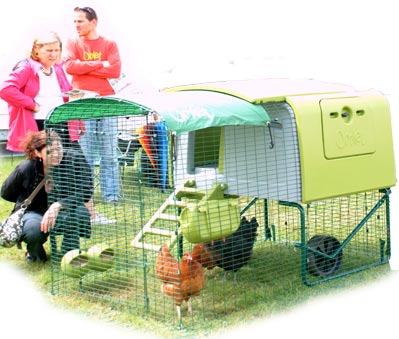


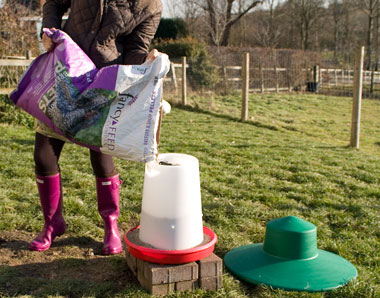
We are looking into keeping chickens for the first time. We intend to have 3 hens. We are looking at the best size of coop & run. We won’t be able to let then run free in the garden so we will need to use a run. We have seen a number of coops with attached runs but the information regarding the recommended size of the run is not very clear. I know that they will need 12″x 12″ per hen in the coop but what about the run? We want to make sure our girls are healthy and happy.
My answer to this question is always as much room as possible…
Larger runs stop them from getting bored which can lead to vices such as feather picking or egg eating and allow hens at the lower end of the pecking order to have some space from bullies.
Hi again, I’m redoing the run I wanted to ask which would be better, wood chip on slabs, or someone said put down polypropylene weed proof matting then turf protection mat then the wood chips, I need to start this week so any input would be helpful. Thanks for all the help you have given me.
I go for weed fabric with wood chips on top. If you put enough on top (5 to 6 inches) they don’t tend to scratch up the matting. The trouble with slabs is they don’t allow good drainage unless you slope them and even then you end up with water pouring off the sides out of the run.
With fabric, you can pull it up and replace it every couple of years if it gets ragged in places.
Thanks a lot or that, you have helped me a lot over the year,don’t know what I wold do with out you.
Would soft wood chips be ok
Yes, they just break down and compact a bit quicker but do the same sort of thing. Bark and Hay are the two things to avoid because of harmful mould spores, that’s all.
Hi, I will be getting my first two chickens next week and I am busy getting things ready. One thing I am a bit worried about is what to do with the muck when I clean out their coop. What do I do with it? I will be a garden-chicken-keeper with limited space. Thanks.
Hi Lucinda, well the best way to deal with it is to compost chicken manure from the chicken house and run and then spread it on the garden, but if you have a small garden without the space for this then I would try to find a local gardener (chicken manure is one of the best manures), failing this, you can put it in garden waste recycling bags or into bags and down to your local recycling center (putting it into the garden waste bin). It would be a shame to waste it but if all else fails…. the dustbin. At least it puts some goodness into landfill but is far better on someone’s garden 😉
I have an enclosed/fenced wood at the bottom of my garden of about three quarters of an acre. I was hoping to only have a chicken coop and not use a run but just let them have the run of the wood. Would that be okay ? or should I still have a run attached to my coop ? I am planning on locking them in their coop each night and letting them out each day.
Unfortunately the fox will soon find them. The best solution is to fence of an area (or the whole area?) and then use three electric strands on insulators – one at 6 inches to stop digging, one at nose height and one on the top. This ‘should’ stop the fox getting in, even with a low fence.
Hi again, have re done the run which is a stand in one 14by14 ft I would love to put some green in it any ideas of what I could plant or put into pots or would the hens just eat every thing, I still have our Xmas tree in there and apart from the lower leaves they have left it alone, also would this size run with a shed 6by4ft be able to house 3 more hens making 8 ,thanks.
Hens eat most things so you will have to experiment. If you grow taller bushes and plants, they will usually leave the upper part alone.
The shed certainly seems big enough but I would urge you to give the chickens a few hours of free range outside of the run every few days. This will help to keep them entertained, preventing vices like feather picking and bullying from occurring and will also top up their diet with insects and other beneficial things.